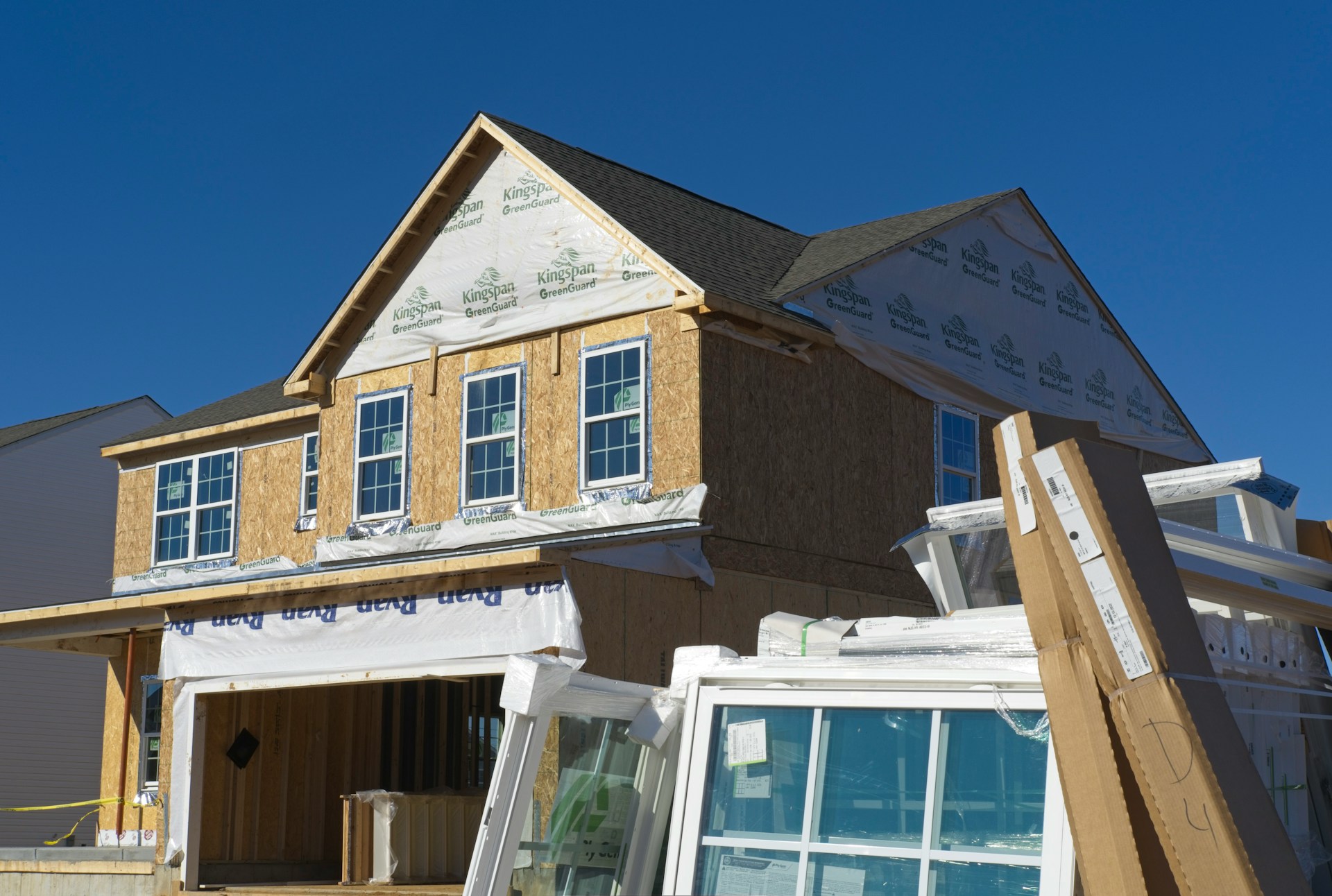A house refinance can serve many objectives. You can reduce your interest rate, get a lower monthly payment, access extra home equity, or get out of debt faster. Some house refinances allow you to accomplish multiple objectives at the same time.
However, it becomes more difficult to refinance your house if you have a bad credit score. Lenders often have credit score requirements and heavily weigh this factor when reviewing your application. This guide will explore how you can refinance your house even if you have poor credit.
What Does Poor Credit Mean?
A poor FICO credit score falls within the range of 300 to 579. This score indicates a consumer has had difficulty with paying their bills on time. Some consumers with this credit score range may have endured bankruptcies, foreclosures, and other financially challenging events.
It is riskier for a mortgage lender to offer money to an applicant with poor credit. Lenders give out capital with the hope and expectation of receiving on-time payments. Lenders can earn relatively low-risk returns on their money when they give capital to borrowers with high credit scores. However, lenders usually end up with losses if a consumer with poor credit defaults on the loan.
How Does Refinancing Your House Work?
Refinancing your home involves replacing your existing mortgage with a new mortgage. You will have a new rate and term for your mortgage, which will affect your monthly payments. Some people add more years to the backend of their mortgages to reduce monthly payments. Other people refinance when they have higher credit scores to capitalize on lower interest rates.
You can also change your mortgage’s terms while getting extra capital through a cash-out refinance. You will have to apply for a refinance, similar to how you applied for a mortgage. The lender will assess your credit score, debt-to-income ratio, and other factors before making a decision.
Refinancing your mortgage will involve additional costs, such as a new origination fee and other administrative expenses. While a refinance offers a lot of versatility, you shouldn’t be dependent on them. Kicking the can further down the road without a good plan can lead to more financial hardships in the future. However, a refinance can give you more time and flexibility to get a side hustle and grow your income.
Can You Refinance Your House with Poor Credit?
It is possible to refinance your house even if you have a bad credit score. However, fewer lenders work with consumers who have poor credit scores. You may have to do more searching to find a lender who will let you refinance your home. Improving your credit score while searching for a lender or considering a refinance is a good idea. A higher credit score will give you more options.
Possible Risks and Consequences of Refinancing with Poor Credit
For many people, refinancing with poor credit may be a better choice than not refinancing at all. Some homeowners need the extra money or lower monthly payments right away.
High-Interest Rates and Fees
You are guaranteed to end up with a higher interest rate than average if you have a poor credit score. Origination fees and other costs will be elevated for consumers with poor credit scores. These extra costs can be worth the smaller monthly payments from an extended loan term.
Smaller Loan Amounts
The lenders willing to work with low-credit borrowers may offer less capital. Smaller loan amounts can also help borrowers qualify based on their debt-to-income ratios. Creditors tend to reserve higher loan amounts for people who have good credit scores and earn enough income to make the monthly payments.
Extended Loan Terms
An extended loan term can minimize your monthly payments. However, mortgage payments will show up in your budget more often. For some people, the prolonged monthly mortgage payments may be worth having a lower monthly payment. However, your finances will free up considerably when you fully pay off your mortgage. Refinancing can prolong that process.
Possibility of Foreclosure
Refinancing your property can eventually lead to foreclosure if you have difficulty paying off your mortgage. Some people end up with higher monthly payments due to elevated interest rates or by using a cash-out refinance. Refinances themselves can be expensive as well due to the administrative costs.
You can see your monthly payment before committing to a refinance and plan it out in your expenses. Filling any budget gaps with a side hustle, overtime, or a better career opportunity will reduce the likelihood of a foreclosure.
How To Refinance Your House With Poor Credit
It’s possible to refinance your house even if you have poor credit. These steps will help.
Repairing Your Credit
Repairing your credit score will give you more opportunities and lower interest rates. You should aim to improve your credit score even if you aren’t ready to refinance right now. A higher credit score can help you save money in various ways, such as lower insurance premiums and utility bills.
Consumers can use several strategies to improve their credit scores, but most of the credit-building process revolves around paying bills on time and reducing your balances. If you do both of those things, the rest will follow over time.
Increasing Income
A higher income will make staying on top of the monthly loan payments easier. Creditors use a metric called the debt-to-income ratio to gauge your ability to pay on time.
Consumers can increase their income through several methods. While there are many side hustles available, meaningful income growth comes from developing new skills and pursuing career advancement opportunities. Check in with your employer or clients and see if they are looking for additional work or are seeking to fill in a higher-paying position.
Increasing your income is the best long-term strategy to build credit, get a refinance, and afford the monthly payments. It won’t happen tomorrow but don’t underestimate how much you can accomplish in the next 1-3 years.
Saving for Down Payment
Saving for a down payment is more applicable if you are getting a mortgage for a new property. A higher down payment means you won’t have to borrow as much money from a bank, credit union, or online lender. Asking for less money can increase your chances of getting approved.
Partnering with a Co-signer
If you partner with a co-signer, the lender will look at the co-signer’s credit and income during the application process. While a co-signer can increase your chances of getting approved, the co-signer takes on a significant risk. A co-signer is legally required to make the loan payments if the borrower cannot make them. This approach decreases the financial institution’s risk, which can make it easier to get a loan. However, you have to convince the co-signer that you can stay on top of the loan payments and then deliver on your word.
Exploring Government-Backed Refinance Programs
The government has several programs that can help homeowners obtain extra cash for a refinance. Government agencies back these programs and make capital much easier to access. The Home Affordable Refinancing Program (HARP) and Federal Housing Administration (FHA) refinance loans are two choices to consider.
Considering Subprime Loans
Subprime loans come with higher interest rates but can be a viable way to refinance your property. You can use the capital from a subprime loan to pay off some or all of your mortgage. Then, you will have to make the monthly payments for your subprime loan. You might end up with two monthly payments if your subprime loan does not cover your entire mortgage. A subprime credit score ranges from 580-619.
Finding Lenders Who Refinance with Poor Credit
Some lenders work with consumers who have poor credit and help them refinance their mortgages. Although these lenders are harder to find, it’s still worth the effort to consider multiple lenders and compare rates. That way, you increase your chances of getting a good deal given the circumstances.
Lenders who work with low-credit borrowers typically set higher interest rates and fees for their financial products. It’s a disadvantage to consider, but these lenders may offer your only chance at refinancing your house. If you have a few months before you have to refinance your property, you may want to wait a bit and use the extra time to build your credit score. Picking up a side hustle can help you make on-time mortgage payments while you repair your credit. However, if you need to refinance your property now, some lenders will be happy to help for a higher price.
The Process of Refinancing with Poor Credit
The refinancing process consists of several straightforward steps.
1. Document Gathering
Most lenders have the same document requirements. You will need a photo ID and proof of income. Tax returns, pay stubs, and bank account statements are some of the financial documents you may need.
2. Choose a Suitable Lender
Don’t pounce on the first offer you find. Comparing multiple lenders and assessing their offers can help you make a better decision. Even a half of a percentage point off your interest rate can help you save thousands of dollars over the loan’s duration.
3. Submit Your Application
Once you feel confident about a lender, it’s time to submit an application. Most lenders will let you submit an online application. You will then receive more instructions on what to do next. Each lender offers a different application process, but they are similar.
The Bottomline: Refinancing with Poor Credit is Possible
A poor credit score makes it more challenging to get a refinance, but it is still possible. Homeowners should assess what they want to achieve from a refinance before going through the process. Some homeowners wish to lower monthly payments and are willing to extend their loan durations to accomplish that objective. Other consumers want to tap into their home equity while getting a refinance. Knowing what you want from a refinance can lead to a more optimal outcome. You will get a better understanding of what type of offer you want, and you may even consider alternatives such as working on a side hustle to fill in the gaps.
In addition, the government has several programs available for homeowners who want an easier path to a refinance. Some lenders also work with consumers with low credit scores and give them the capital that they need.







